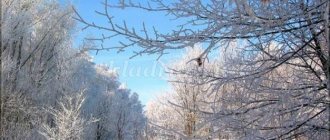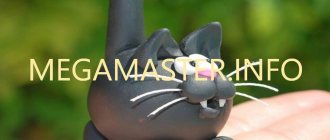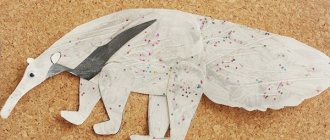Fox
Dexterous, cunning and smart - this is how the fox appears before us in fairy tales and fables. Indeed, this animal often lives not far from people - not in a dense forest, but closer to the edge, and sometimes near fields and ravines - but does not give itself away. The fox is also very observant: for example, it is not afraid of dogs sitting on a chain, or people working in the field who do not notice it.
But if she is suddenly in danger, the fox disappears quickly, practically sprawling above the ground as she runs, and it is extremely difficult to catch her. When running and jumping, the fox's tail helps it maintain its balance - it is fluffy and red, sometimes white or black at the tip. The fox has red fur, a narrow muzzle, and black paws and ears.
Unlike wolves, foxes love solitude and do not gather in packs. They feed mainly on mice. In winter, foxes run through snow-covered fields and listen for a mouse squeaking somewhere so they can grab it. Foxes have excellent hearing, as does their sense of smell. But the vision is not very good.
Foxes also hunt hares, destroy bird nests, eat insects, snakes and frogs, and deftly carry chickens from farmers. And they don’t disdain berries and fruits.
Foxes breed in burrows. Moreover, sometimes they do not dig holes themselves, but are occupied by strangers - and at the same time they make backup passages just in case. The foxes feed their cubs - blind, deaf and toothless - with milk. Grown-up fox cubs are curious and do not stay in the hole for long - they are drawn to explore the surrounding space. True, they hide back in the hole at the first maternal “command” - yapping.
Foxes don't like meeting people too much, so if a fox suddenly approaches you on its own, this is a bad sign. Maybe she's mad. If there is no place to hide, try climbing the nearest tree, distracting the fox by throwing food (if you have it), or letting it grab onto a stick.
Boar
Powerful and strong fanged boars, the ancestors of pigs, look menacing and are therefore considered very dangerous. In fact, a healthy boar, like many other animals, can attack a person only if there is a need to defend itself or protect its cubs. But wounded and sick boars are really aggressive and unpredictable. Be that as it may, you can’t run away from them, just like you can’t come closer, look into their eyes, or turn your back. When meeting a wild boar, you should behave calmly. But, most likely, the meeting will not happen - the boar will hear you from afar and leave on its own.
This animal runs quickly - the structure of its hooves allows it to overcome even swamps without getting bogged down - and swims across any rivers. But it is difficult for a wild boar to move in deep snow. At the same time, he does not freeze in cold weather - by winter he develops a thick undercoat and accumulates fat.
Wild boars live in small groups. They eat hazelnuts, seeds, acorns, plant tubers, and enjoy mushrooms, berries, apples and pears. Sometimes they dig up potatoes or turnips from summer cottages. Piglets are given birth in a den hidden by moss and branches. On the backs of the babies there are light stripes, because of which the cubs are not visible among dense thickets and in bright light, as well as in the shade.
Like pigs, wild boars love to bathe in mud - this is how they escape the heat and get rid of insects clinging to their coarse fur.
Elk
Elk is just as large and powerful, but, according to many, not as luxurious an animal as deer. Also wide horns (protection from wolves and bears), but - a hump on the nose, a thick upper lip, a massive body with a “hump” that forms the scruff of the neck... And also long ears, thick warm fur and large hooves.
Thanks to these features, moose do not freeze in winter, hear perfectly, move through deep snow, can swim and run quickly - including through dense forests and swamps.
Moose feed on everything they find in the forest: leaves, bark, branches, pine needles, moss, mushrooms, berries and plants growing near water. By the way, moose love to swim, especially in the heat.
In winter, moose shed their antlers to grow new ones in summer.
In the spring, moose cows give birth to cubs, feed them milk and lick their fur. Moose milk is considered healthy. When a moose cow walks with a “child,” it is better to avoid her: in order to protect the calf, she may attack.
Moreover, there are even moose farms where moose are milked - that is, they can actually be tamed.
Moose can be found not only in the forest - it can even wander into a city park (for its love of walking, it is called a tramp). As with other wild animals, the main thing is not to attract attention to yourself, do not get close or run away.
Are you learning English with your child? In this article we have compiled a list of animals in English for grades 2-3 with translation, transcription in Russian letters and colorful illustrations. And simple riddles about animals will help you consolidate your knowledge.
Lynx
Meeting this large yellow-red forest “cat” with the famous “tassels” on its ears is a great success. Even hunters encounter lynx extremely rarely. At the same time, it does not pose a danger to humans, unless it is suddenly infected with rabies.
The lynx is flexible, dexterous and strong, and can climb trees and swim well. And deep snow is not a hindrance for her - because of her strong, furry paws. The lynx is also cunning - sometimes it checks the traps and traps of hunters before they themselves and drags away other people's prey. Sometimes it can wait for hours for a prey (hare, deer, roe deer, bird) in ambush, then quietly and unnoticed to sneak up and jump on it. If you can’t catch it the first time, the lynx can hunt for the same animal all day long. By the way, when entering the countryside, the lynx also hunts cats - almost their own kind.
Lynxes prefer to settle in secluded places - for example, in holes under trees. They are not shy about occupying other people's holes.
Lynx cubs are furry and blind for the first few days. By the way, both parents raise lynx cubs, and this is a rather rare case in the animal environment.
Sable
Sable hunting has long been widespread in our country. Sable skins (sable fur is thick, delicate, warm and looks luxurious, especially in winter) were presented by the tsars as gifts to eminent foreign guests. Now hunting has significantly reduced the number of sables, and they can be seen extremely rarely.
These beautiful fast animals live in old stumps and tree hollows not high above the ground. Sables are dark brown or light brown, with a yellowish spot on the chest and neck, round ears, wide paws and a bushy tail.
Sables climb trees well, but mostly move on the ground or trunks of fallen trees and snags. In winter, the sable does not hibernate, it only waits out bad weather in a shelter. The animal can also run under the snow - its fur coat is warm, and enemies will not reach you there. And it’s convenient to hunt - sables go hunting both during the day and at night. Their main prey are mice, moles, and shrews.
Sables strictly divide hunting territories between relatives. If an opponent encroaches on his territory, the animal can enter into a fight with him.
Sable cubs are born in the spring, feed on their mother's milk and remain blind for a whole month. The father brings food to the kids. Only in the fall do sables begin to live and hunt on their own.
The sable does not attack a person first, but there is still no need to provoke him. The animal may perceive unnecessary attention as danger.






